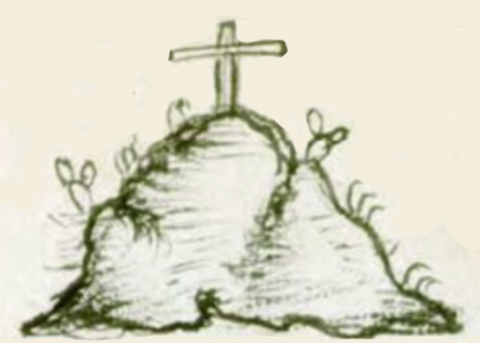Tepetzinco (Chav14)
This black-line drawing of the frontal view of a hill or mountain (tepetl) with some three-dimensional shading, surface vegetation, and a Christian cross at the top (perhaps a reason for the reverential, -tzin-, in the place name), is a compound glyph for the place name, Tepetzinco.
Stephanie Wood
The -tzinco ending, however, could refer to a spinoff community. The cross is a Christian cross, but it could have a secular meaning here. Often, Spanish officials introduced crosses to Indigenous communities as part of the marking of territories.
Stephanie Wood
Te Petzingo
Tepetzinco
Stephanie Wood
1578
Jeff Haskett-Wood
nombres de lugares

Tepetzinco, a place in the midst of the lagoon near Mexico Tenochtitlan, https://nahuatl.wired-humanities.org/content/tepetzinco
tepetl(atl), a brittle volcanic rock, https://nahuatl.wired-humanities.org/content/tepetlatl
-tzinco, locative suffix, https://nahuatl.wired-humanities.org/content/tzinco
The Codex Chavero of Huexotzinco (or Códice Chavero de Huexotzinco), https://www.loc.gov/resource/gdcwdl.wdl_03246_001/?sp=1
The Codex Chavero of Huexotzinco (or Códice Chavero de Huexotzinco) is held by the Instituto Nacional de Antropología e Historia, México. It is published online by the World Digital Library and the Library of Congress, which is “unaware of any copyright or other restrictions in the World Digital Library Collection.”




